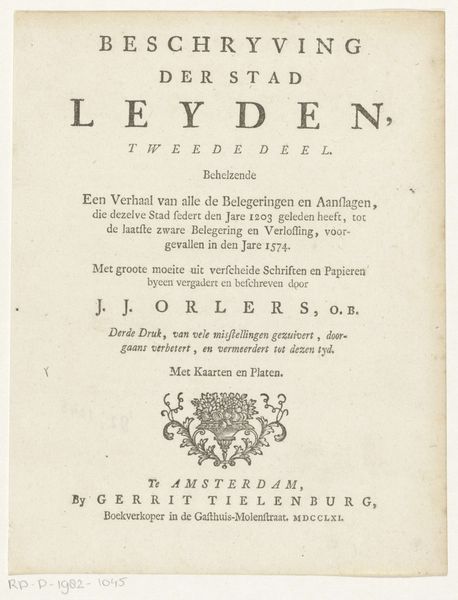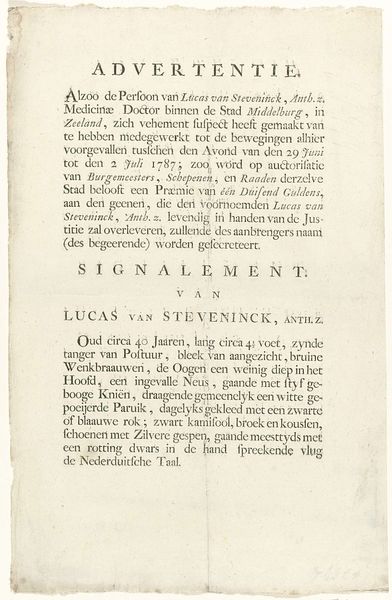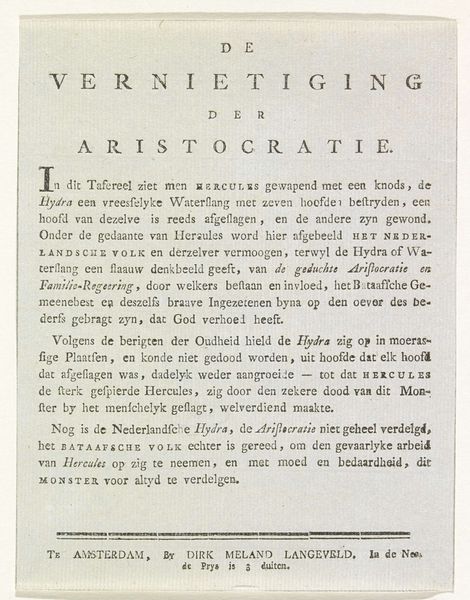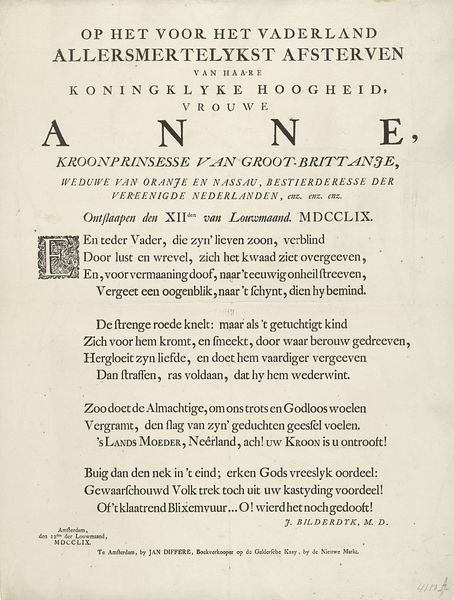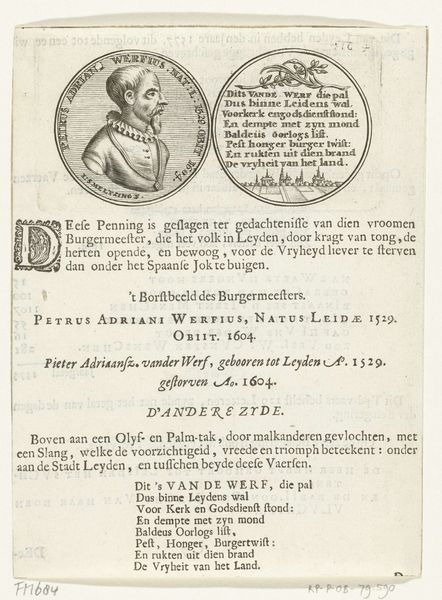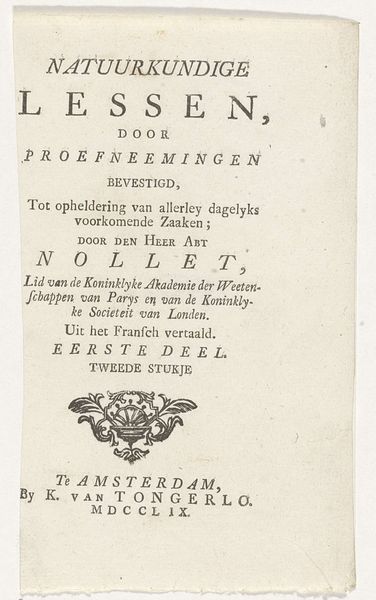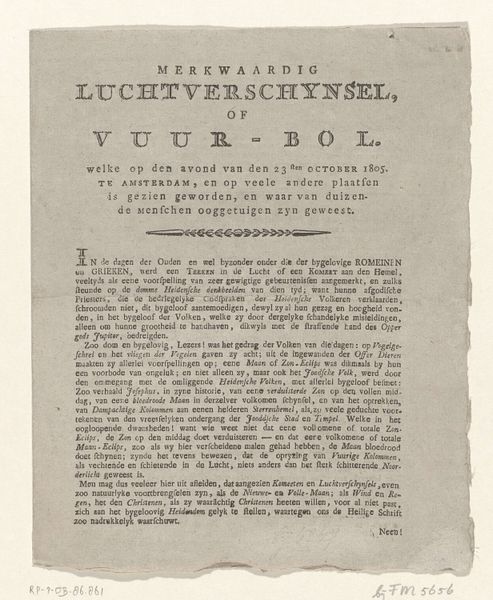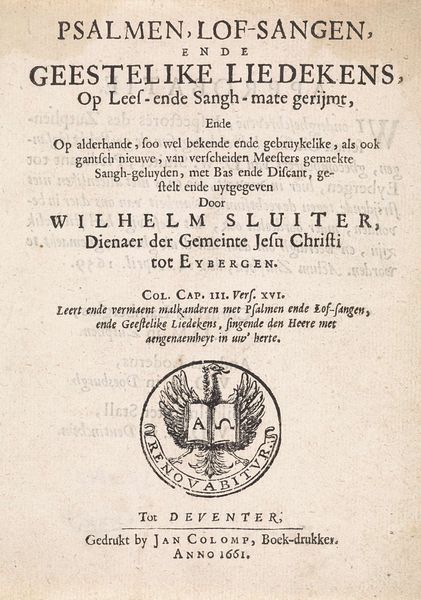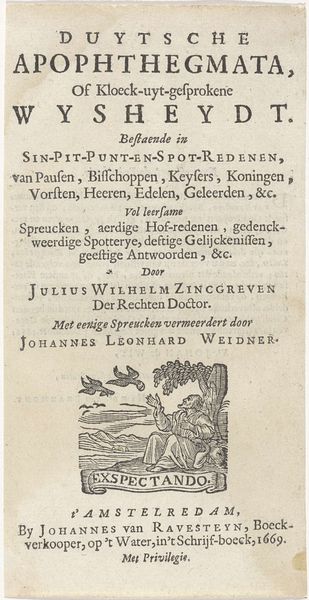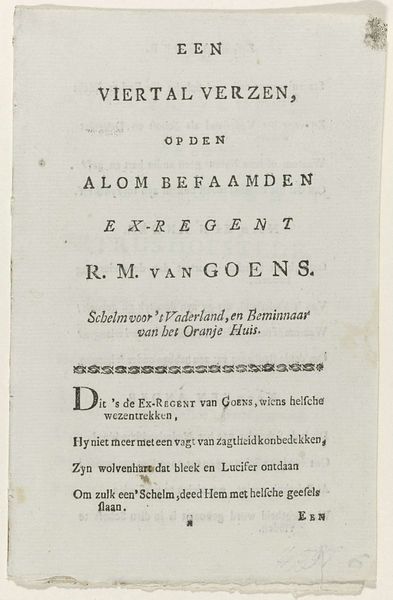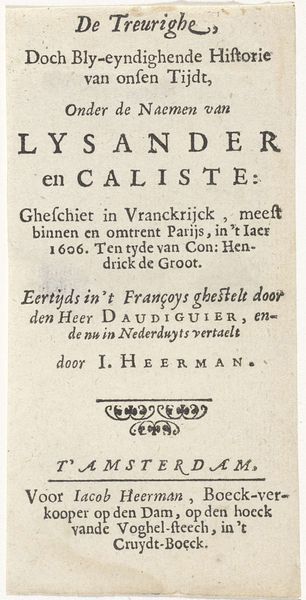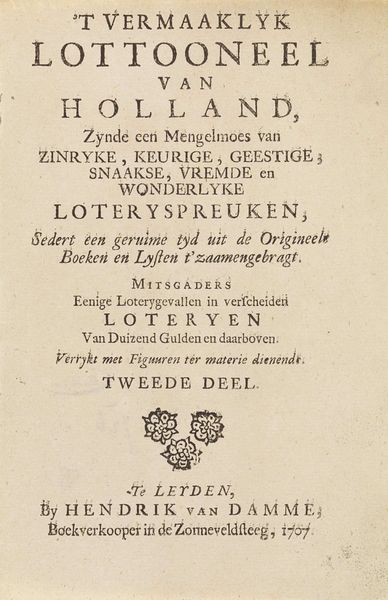
Spotverzen op het portret van de hertog van Brunswijk, 1782-1783 1782 - 1783
0:00
0:00
Dimensions: height 190 mm, width 125 mm
Copyright: Rijks Museum: Open Domain
Editor: So this print, "Spotverzen op het portret van de hertog van Brunswijk, 1782-1783" is intriguing. It feels very official, with its baroque frame and clear typography, but the text hints at something more… subversive? What do you see in this piece beyond just a formal portrait? Curator: You're right, it's more than a simple portrait. It uses the *idea* of a portrait to engage in political discourse. The frame and title give an air of authority, of memorialization. But look closer at the verses themselves. They're critical, satirical even. It's an attack on the Duke, accusing him of treacherous deeds. Editor: So it's playing with the conventions of portraiture to undermine the subject’s power? Curator: Precisely! Think about who controls image-making and its distribution at this time. Who *commissions* portraits? This isn't a flattering portrayal meant for the Duke’s family. It's a printed piece, meant for wider circulation, for public consumption. It uses the familiar visual language of power to express dissent. How effective do you think such a piece could be? Editor: That’s fascinating. I guess a printed verse could be pretty effective! Seeing this displayed at the Rijksmuseum now, I never would have guessed it had such strong political implications. The presentation in a museum almost neutralizes its original intent, doesn't it? Curator: It certainly transforms it. Now, it's an artifact, a document of a specific political moment. But its power comes from understanding its original context, its public role as a critical intervention. So the politics of imagery never really fades. Editor: I see. So, it’s about looking beyond the surface and understanding the historical and cultural context to grasp the work’s true meaning. Curator: Exactly! Analyzing how social and political forces influenced the work's production and its reception allows us to go deeper than just describing aesthetic choices. It challenges our modern understanding of art’s purpose and political potency. Editor: This makes me rethink how art, even historical pieces, still resonates with contemporary political landscapes. Thanks, I learned so much.
Comments
No comments
Be the first to comment and join the conversation on the ultimate creative platform.


